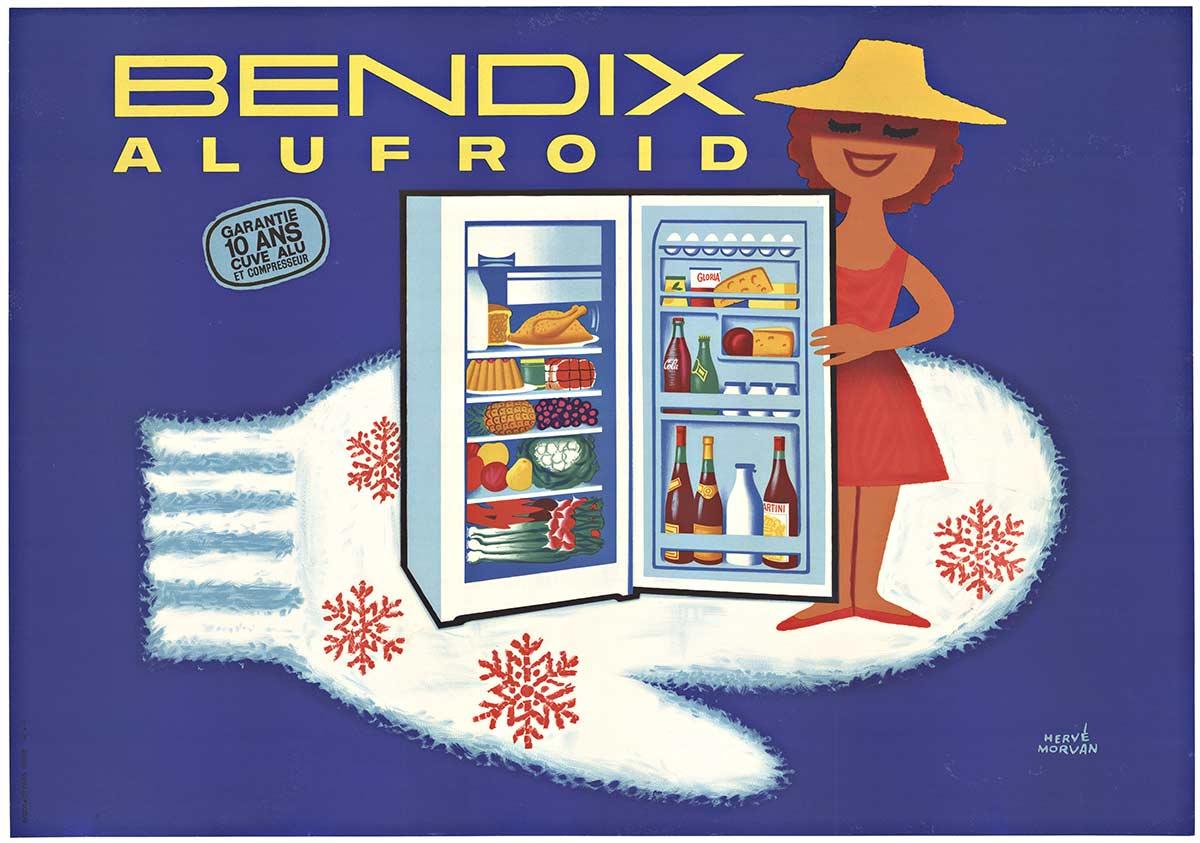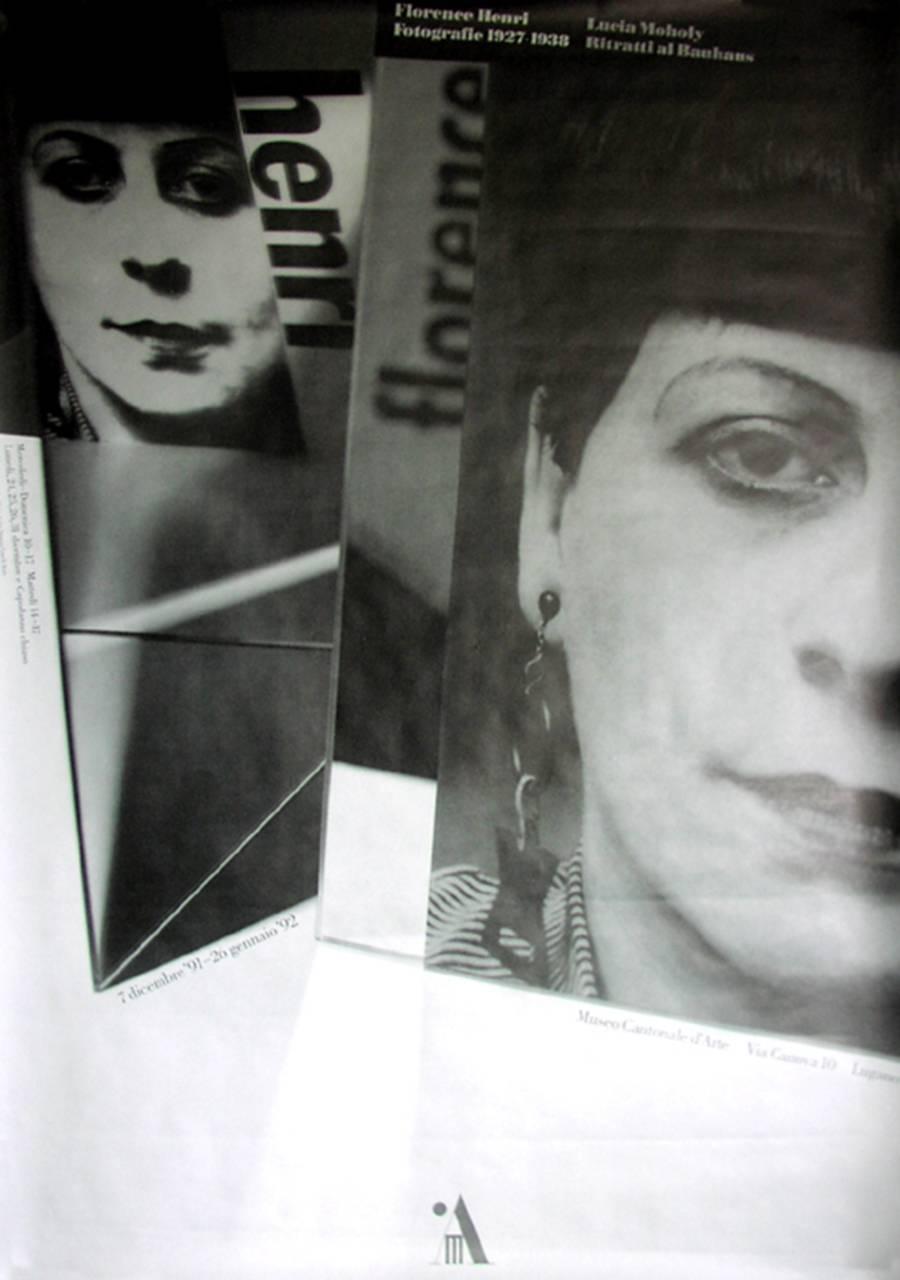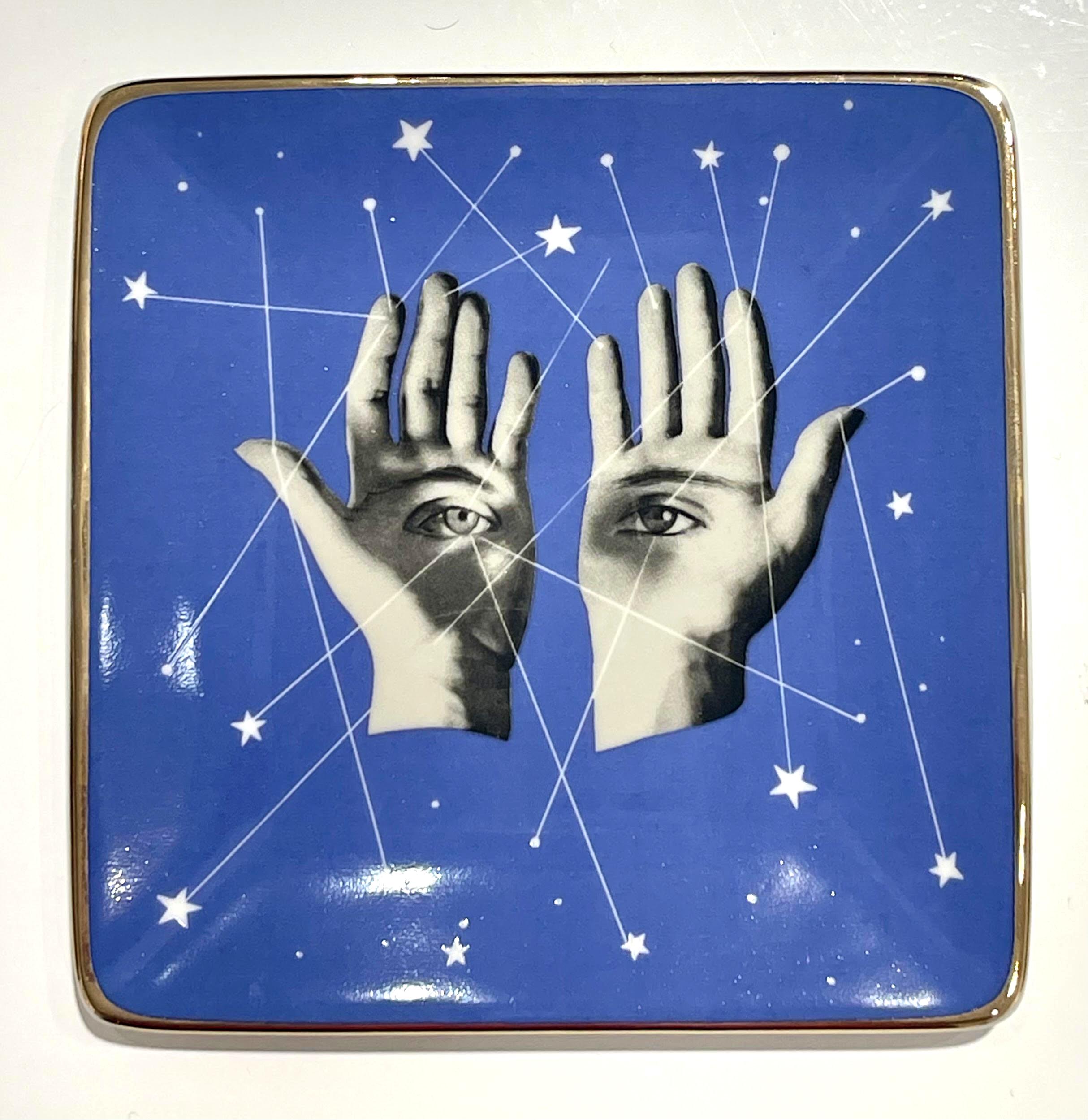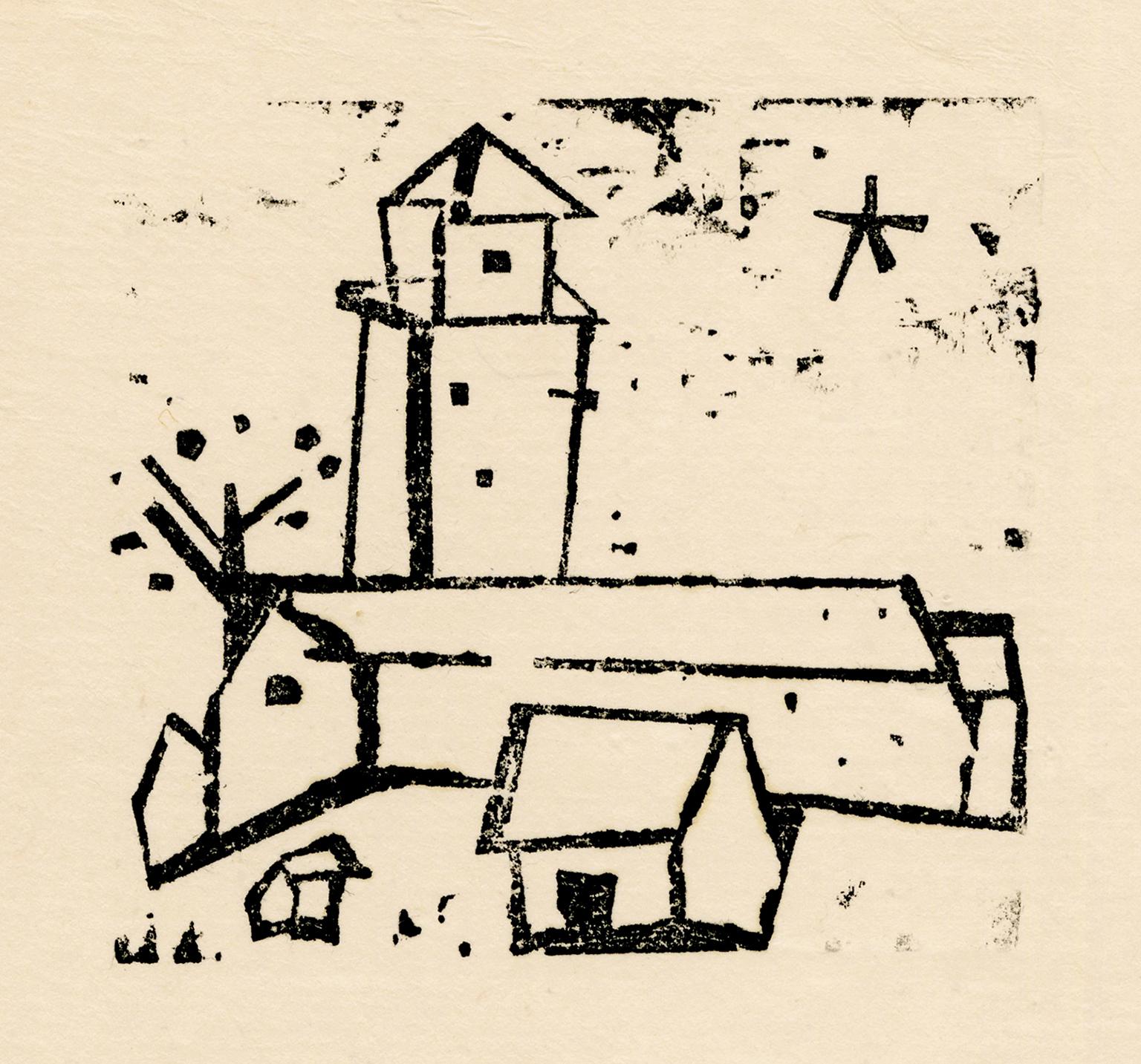Items Similar to Sale and Marketing Kiosk for P Cigarettes (Bauhaus) (20% OFF + Free Shipping)
Want more images or videos?
Request additional images or videos from the seller
1 of 9
Sale and Marketing Kiosk for P Cigarettes (Bauhaus) (20% OFF + Free Shipping)1994
1994
About the Item
Herbert Bayer
Sale and Marketing Kiosk for P Cigarettes (Verkauf- und Werbekiosk, Zigarettenmarke P ), 1924
Offset Lithograph
Year: 1994
Size: 33.2 × 23.2 inches
Publisher: Bauhaus Archiv, Berlin - Germany
COA provided
--------------------------------------
Herbert Bayer was an Austrian and American graphic designer, painter, photographer, sculptor, art director, environmental and interior designer, and architect. He was instrumental in the development of the Atlantic Richfield Company's corporate art collection until his death in 1985
- Creation Year:1994
- Dimensions:Height: 33.2 in (84.33 cm)Width: 23.2 in (58.93 cm)
- Medium:
- Movement & Style:
- After:Herbert Bayer (1900-1985, Austrian, American)
- Period:
- Framing:Framing Options Available
- Condition:
- Gallery Location:Kansas City, MO
- Reference Number:
About the Seller
5.0
Platinum Seller
These expertly vetted sellers are 1stDibs' most experienced sellers and are rated highest by our customers.
Established in 2016
1stDibs seller since 2017
965 sales on 1stDibs
Typical response time: <1 hour
- ShippingRetrieving quote...Ships From: Kansas City, MO
- Return PolicyA return for this item may be initiated within 10 days of delivery.
More From This SellerView All
- Bottleneck Vase with Falling PetalBy Derrick GreavesLocated in Kansas City, MODerrick Greaves Title: Bottlenack Vase with Falling Petal Medium: Color lithograph Year: 1971 Signed, numbered or inscribed Edition: XXXV + h.c. Size: 13.7 × 15.2 on 29.4 × 20.7 inches Derrick Greaves is one of the most eminent British painters of the last half century. Greaves initially gained acclaim in the 1950s, when he represented Britain at the Venice Biennale along with the other 'Kitchen-Sink' painters with whom he was associated: John Bratby...Category
1970s Contemporary Prints and Multiples
MaterialsLithograph
- Poppea Number OneBy Tono ZancanaroLocated in Kansas City, MOTono Zancanaro Title: Poppea Number One Medium: Color Lithograph Year: 1981 Signed Edition: XXV Size: 27.3 × 19.5 inches COA provided Antonio "Tono" Zancanaro ( Padua , 8 April 1906...Category
1980s Modern Prints and Multiples
MaterialsLithograph
- Scarlett at SpelmanBy Agent XLocated in Kansas City, MOTitle : Scarlett at Spelman (freshman year) Materials : Mixed Media Date : 2018 Dimensions : 30x24 Description : The famous and oldest Spelman women's college in Atlanta. This is inf...Category
2010s Contemporary Prints and Multiples
MaterialsLithograph
- Abanderado (Iconic, Spanish, Baroque, Large)By Antonio de FelipeLocated in Kansas City, MOAntonio de Felipe Abanderado Offset Lithograph Year: 1993 Size: 39.0 x 39.0 inches Signed in the stone COA provided --------------------------------------- Antonio de Felipe was born in Valencia in 1965. Ever since a very young age he has felt an artistic drive that led him to earn a fine arts degree at the University of Valencia. In 1996 he moved to Madrid where he has his studio. The work of Antonio de Felipe is a constant source of fascination and surprises. It is a great pleasure to witness how the artist’s ingenious world of ideas and his sense of humour are constantly evolving. His subject worlds form a surprising genre blend of striking contrasts, a linking of series characters, classical art and commercialism side by side with contemporary icon worship. Antonio de Felipe has developed his extensive work in different series like, Las Vacas Logotipos and Popsport among others. In the serie Cinemaspop Antonio de Felipe has painted portraits of brilliant actors whose icon status is secure. Two of them are Audrey Hepburn and Greta Garbo, seen against a wide range of backgrounds where the artist pays tribute to the great masters – either Picasso’s brutal Guernica or space figures reminiscent of Miró. As a third, Marilyn Monroe, parts her ruby lips...Category
17th Century Renaissance Figurative Prints
MaterialsLithograph
- Le Peintre et son ModeleBy (after) Pablo PicassoLocated in Kansas City, MOPablo Picasso Le Peintre et son Modele 1964 Original Color Lithograph on Velin d'Arches Size: 10x7.375in Signed and dated in the stone Edition: 2,000 Annotated verso Publisher: Mourl...Category
1960s Modern Prints and Multiples
MaterialsVellum, Lithograph
- Les Oiseaux de NuitBy (after) Georges BraqueLocated in Kansas City, MOGeorges Braque Les Oiseaux de Nuit 1964 Original Reproduction of a Gouache on Velin d'Arches Size: 10x7.375in Edition: 2,000 Annotated verso Unsigned as issued Publisher: Mourlot, Pa...Category
1960s Modern Prints and Multiples
MaterialsLithograph, Vellum
You May Also Like
- BENDIX ALUFROID original horizontal French posterLocated in Spokane, WAOriginal Herve Movan vintage French poster: BENDIX ALUFROID. Horizontal format size: 43" wide by 30.5. Professional acid-free archival linen backed, very good condition; ready to ...Category
1960s Bauhaus Figurative Prints
MaterialsLithograph
- Florence HenriBy Bruno MonzuzziLocated in New York, NYRitratti al Bauhaus. Photo-offset poster. Museo cantonale d'arte Lugano Year: 1991. Monguzzi studied in Geneva and London, spent part of his early career in at the studio of Antonio Boggeri, in Milan. The inspiration of the experimental and visually-daring work of the avant garde designers Herbert Bayer, El Lissitsky, Jan Tschichold, Piet Zwart, Paul Schuitema, Ladislav Sutnar...Category
1990s Bauhaus Figurative Prints
MaterialsOffset
- Things to Come trayBy Herbert BayerLocated in New York, NYHerbert Bayer Things to Come tray, 2018 Porcelain dish with metallic gold edge and silkscreened image Limited edition of an unknown quantity, originally distributed by the Museum of Modern Art, before it sold out. Measurements: Box: 5.5 x 5.5 inches Tray: 5 x 5 inches Provenance: Originally distributed by the Museum of Modern Art, before it sold out Manufacturer: Galison Publishing LLC and The Museum of Modern Art Herbert Bayer biography: Artistic polymath Herbert Bayer was one of the Bauhaus’s most influential students, teachers, and proponents, advocating the integration of all arts throughout his career. Bayer began his studies as an architect in 1919 in Darmstadt. From 1921 to 1923 he attended the Bauhaus in Weimar, studying mural painting with Vasily Kandinsky and typography, creating the Universal alphabet, a typeface consisting of only lowercase letters that would become the signature font of the Bauhaus. Bayer returned to the Bauhaus from 1925 to 1928 (moving in 1926 to Dessau, its second location), working as a teacher of advertising, design, and typography, integrating photographs into graphic compositions. He began making his own photographs in 1928, after leaving the Bauhaus; however, in his years as a teacher the school was a fertile ground for the New Vision photography passionately promoted by his close colleague László Moholy-Nagy, Moholy-Nagy’s students, and his Bauhaus publication Malerei, Photographie, Film (Painting, photography, film). Most of Bayer’s photographs come from the decade 1928–38, when he was based in Berlin working as a commercial artist. They represent his broad approach to art, including graphic views of architecture and carefully crafted montages. In 1938 Bayer emigrated to the United States with an invitation from Alfred H. Barr, Jr., founding director of The Museum of Modern Art, to apply his theories of display to the installation of the exhibition Bauhaus: 1919–28 (1938) at MoMA. Bayer developed this role through close collaboration with Edward Steichen, head of the young Department of Photography, designing the show Road to Victory (1942), which would set the course for Steichen’s influential approach to photography exhibition. Bayer remained in America working as a graphic designer for the remainder of his career. -Courtesy of MOMA More about Herbert Bayer: Herbert Bayer (1900-1985) was born in Austria, where he entered into an apprenticeship under the architect and designer, Georg Smidthammer, with whom Bayer learned drawing, painting, and architectural drafting, inspired by nature and without formal knowledge of art history. In 1920, Bayer discovered the theoretical writings of the artist Vassily Kandinsky, as well as Walter Gropius’ 1919 Bauhaus manifesto, in which Gropius declared the necessity for a return to crafts, in which were found true creativity and inspiration. Bayer traveled to Weimar to meet Gropius in October of 1921 and was immediately accepted into the Bauhaus. There, he was deeply influenced by the instruction of Kandinsky, Johannes Itten and Paul Klee. In 1928 Bayer moved to Berlin together with several members of the Bauhaus staff including Gropius, Moholy-Nagy and Marcel Breuer. He found work as a freelance graphic designer, particularly with German Vogue, under its art director Agha. When the latter returned to Paris, Bayer joined the staff full time, and also worked increasingly with Dorland, the magazine's principle advertising agency. It was in the period from 1928 to his emigration to America in 1938 that he developed his unique vision as an artist, combining a strongly modernist aesthetic sense with a rare ability to convey meaning clearly and directly. This seamless combination of art, craft and design mark Bayer as true prophet of Bauhaus theories. Bayer followed Gropius to America in 1938, and set his breadth of skills to work later that year in designing the landmark Bauhaus 1918-1928 exhibition at the Museum of Modern Art. Bayer flourished in New York as a designer and architect, but it was his meeting with the industrialist Walter Paepcke in 1946 that allowed him to harness his concepts of 'total design' to the postwar boom. Paepcke was developing Aspen as a cultural and intellectual destination, and found in Bayer the perfect collaborator. Bayer was designer, educator and indeed architect for Paepcke's Aspen Institute...Category
2010s Bauhaus More Art
MaterialsMetal
- 'Church with Houses' — Artist's Personal Letterhead, Bauhaus ModernismBy Lyonel FeiningerLocated in Myrtle Beach, SCLyonel Feininger, 'Church with Houses' also 'Tree and Star' ('Kirche mit Hausern', 'Baum und Stern'), woodcut, 1933, one of a small but unknown number of letterhead proofs; Prasse W275. Annotated 'W 275' (Feininger catalogue number) and inventory number '3033' in pencil, in the bottom right sheet corner. A fine, richly-inked impression, on cream, laid letterhead paper, in excellent condition. Very scarce. Image size 2 7/16 x 2 5/8 inches; sheet size 10 x 6 7/8 inches. Archivally sleeved, unmatted. Exhibited: 'Lyonel Feininer, Woodcuts Used As Letterheads'; Associated American Artists; Feb 4 - March 2, 1974; New York, NY. ABOUT THE ARTIST Lyonel Feininger (1871-1956) was born in New York City into a musical family—his father was a violinist and composer, his mother was a singer and pianist. He studied violin with his father, and by the age of 12, he was performing in public, but he also drew incessantly, most notably the steamboats and sailing ships on the Hudson and East Rivers, and the landscape around Sharon, Conn., where he spent time on a farm owned by a family friend. At the age of 16 he left New York to study music and art in Germany, from where his parents emigrated. Drawn more to the visual arts, he attended schools in Hamburg, Berlin, and Paris from 1887 to 1892. After completing his studies, Feininger began his artistic career as a cartoonist and illustrator, his originality leading him to great success. In 1906, after working for a dozen years in Germany, he was offered a job as a cartoonist at the Chicago Tribune, the largest circulation newspaper in the Midwest. He worked there for a year, inventing what became the standard design for the comic strip: in the words of John Carlin, “an overall pattern. . . that allowed the page to be read both as a series of elements one after the other, like language and as a group of juxtaposed images, like visual art.” His originality did not end there: he went on to become one of the great abstract painters. Like Kandinsky, music was his model, but Kandinsky only knew music from the outside—as a listener (inspired initially by Wagner, then by Schoenberg)—while Feininger knew it from the inside. He lived in Paris from 1906 to 1908, during which time he met and was influenced by the work of progressive painters Robert Delaunay and Jules Pascin, as well as that of Paul Cezanne and Vincent van Gogh. He began painting full-time, developing his distinctive Iyrical style based on Cubist and Expressionist idioms and a concern for the emotive qualities of light and color. He exhibited with the Der Blaue Reiter group in 1913, and in 1917, he had his first solo exhibition at Galerie Der Sturm in Berlin. One year after his solo exhibition, in 1918, Feininger began making woodcuts. He became enamored with the medium, producing an impressive 117 in his first year of exploring the printmaking medium. In 1919 at the invitation of the architect Walter Gropius, he was appointed the first master at the newly formed Staatliches Bauhaus in Weimar. His woodcut of a cathedral crowned...Category
1930s Bauhaus Figurative Prints
MaterialsWoodcut
- 'Little Locomotive' – Artist's Personal Letterhead, Bauhaus ModernismBy Lyonel FeiningerLocated in Myrtle Beach, SCLyonel Feininger, 'Little Locomotive (Kleine Lokomotive)', woodcut, 1936, one of a small but unknown number of letterhead proofs; Prasse W158. Annotated 'W 158' (Feininger catalogue number) and '1936' in pencil, in the bottom right sheet corner. A fine impression, on cream, laid letterhead stock; hinge remains on the left and right top sheet edges, verso, in excellent condition. Very scarce. Image size 2 1/4 x 3 5/16 inches; sheet size 10 x 7 inches. Archivally sleeved, unmatted. Exhibited: 'Lyonel Feininer, Woodcuts Used As Letterheads'; Associated American Artists; Feb 4 - March 2, 1974; New York, NY. Collections: Cleveland Museum of Art, Museum of Modern Art, Staatliche Museen zu Berlin (East Berlin KK). ABOUT THE ARTIST Lyonel Feininger (1871-1956) was born in New York City into a musical family—his father was a violinist and composer, his mother was a singer and pianist. He studied violin with his father, and by the age of 12, he was performing in public, but he also drew incessantly, most notably the steamboats and sailing ships on the Hudson and East Rivers, and the landscape around Sharon, Conn., where he spent time on a farm owned by a family friend. At the age of 16 he left New York to study music and art in Germany, from where his parents emigrated. Drawn more to the visual arts, he attended schools in Hamburg, Berlin, and Paris from 1887 to 1892. After completing his studies, Feininger began his artistic career as a cartoonist and illustrator, his originality leading him to great success. In 1906, after working for a dozen years in Germany, he was offered a job as a cartoonist at the Chicago Tribune, the largest circulation newspaper in the Midwest. He worked there for a year, inventing what became the standard design for the comic strip: in the words of John Carlin, “an overall pattern. . . that allowed the page to be read both as a series of elements one after the other, like language and as a group of juxtaposed images, like visual art.” His originality did not end there: he went on to become one of the great abstract painters. Like Kandinsky, music was his model, but Kandinsky only knew music from the outside—as a listener (inspired initially by Wagner, then by Schoenberg)—while Feininger knew it from the inside. He lived in Paris from 1906 to 1908, during which time he met and was influenced by the work of progressive painters Robert Delaunay and Jules Pascin, as well as that of Paul Cezanne and Vincent van Gogh. He began painting full-time, developing his distinctive Iyrical style based on Cubist and Expressionist idioms and a concern for the emotive qualities of light and color. He exhibited with the Der Blaue Reiter group in 1913, and in 1917, he had his first solo exhibition at Galerie Der Sturm in Berlin. One year after his solo exhibition, in 1918, Feininger began making woodcuts. He became enamored with the medium, producing an impressive 117 in his first year of exploring the printmaking medium. In 1919 at the invitation of the architect Walter Gropius, he was appointed the first master at the newly formed Staatliches Bauhaus in Weimar. His woodcut of a cathedral crowned...Category
1930s Bauhaus Figurative Prints
MaterialsWoodcut
- 'Three Masted Ship, 2' – Artist's Personal Letterhead, Bauhaus ModernismBy Lyonel FeiningerLocated in Myrtle Beach, SCLyonel Feininger, 'Three Masted Ship, 2 (Dreimastiges Schiff, 2)', woodcut, 1937, one of a small but unknown number of letterhead proofs; Prasse W296. Feininger estate stamp and inventory no. 'W 865' in pencil, bottom left sheet corner. Annotated 'W 296' and 'on block : 3702a' in pencil, bottom right sheet corner. A fine impression, on cream, laid, letterhead stock; hinge remains on the left and right top sheet edges, verso, in excellent condition. Very scarce. Image size 2 1/4 x 2 11/16 inches; sheet size 10 x 6 3/4 inches. Archivally sleeved, unmatted. Exhibited: 'Lyonel Feininer, Woodcuts Used As Letterheads'; Associated American Artists; Feb 4 - March 2, 1974; New York, NY. ABOUT THE ARTIST Lyonel Feininger (1871-1956) was born in New York City into a musical family—his father was a violinist and composer, his mother was a singer and pianist. He studied violin with his father, and by the age of 12, he was performing in public, but he also drew incessantly, most notably the steamboats and sailing ships on the Hudson and East Rivers, and the landscape around Sharon, Conn., where he spent time on a farm owned by a family friend. At the age of 16 he left New York to study music and art in Germany, from where his parents emigrated. Drawn more to the visual arts, he attended schools in Hamburg, Berlin, and Paris from 1887 to 1892. After completing his studies, Feininger began his artistic career as a cartoonist and illustrator, his originality leading him to great success. In 1906, after working for a dozen years in Germany, he was offered a job as a cartoonist at the Chicago Tribune, the largest circulation newspaper in the Midwest. He worked there for a year, inventing what became the standard design for the comic strip: in the words of John Carlin, “an overall pattern. . . that allowed the page to be read both as a series of elements one after the other, like language and as a group of juxtaposed images, like visual art.” His originality did not end there: he went on to become one of the great abstract painters. Like Kandinsky, music was his model, but Kandinsky only knew music from the outside—as a listener (inspired initially by Wagner, then by Schoenberg)—while Feininger knew it from the inside. He lived in Paris from 1906 to 1908, during which time he met and was influenced by the work of progressive painters Robert Delaunay and Jules Pascin, as well as that of Paul Cezanne and Vincent van Gogh. He began painting full-time, developing his distinctive Iyrical style based on Cubist and Expressionist idioms and a concern for the emotive qualities of light and color. He exhibited with the Der Blaue Reiter group in 1913, and in 1917, he had his first solo exhibition at Galerie Der Sturm in Berlin. One year after his solo exhibition, in 1918, Feininger began making woodcuts. He became enamored with the medium, producing an impressive 117 in his first year of exploring the printmaking medium. In 1919 at the invitation of the architect Walter Gropius, he was appointed the first master at the newly formed Staatliches Bauhaus in Weimar. His woodcut of a cathedral crowned...Category
1930s Bauhaus Figurative Prints
MaterialsWoodcut
Recently Viewed
View AllMore Ways To Browse
Antique Art Collection
Antique Sale
Antique Art Sale
Shipping Sale
Bauhaus 1920
Antique Bay
Austrian Cigarette
Original Star Wars Poster
Vintage Army Glasses
Japanese Style Mirror
Piranesi Antique Etchings
Screen Waves
Vintage Bicycles
Vintage Chaos
World Exposition Book
Birds Eye London
Casino Print
Contemporary Woodblock Japanese Print





